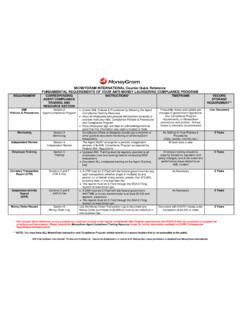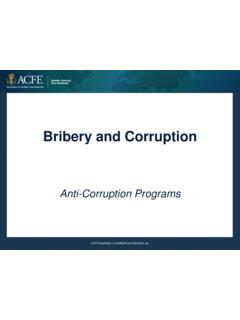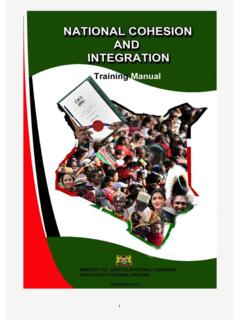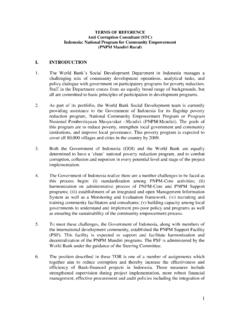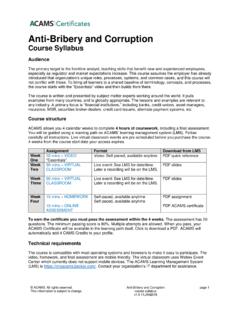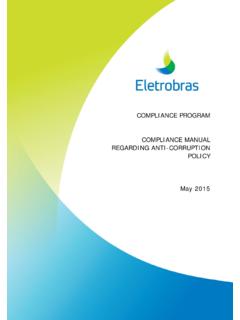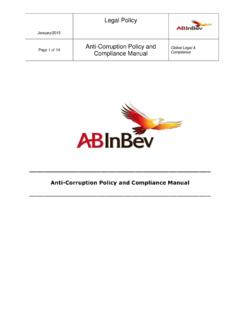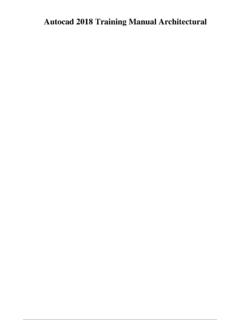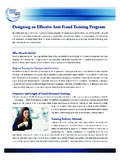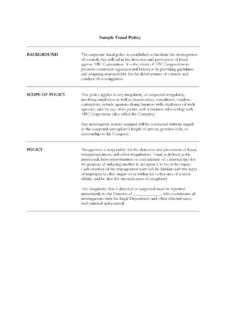Transcription of LATIN AMERICA AND THE CARIBBEAN ANTI …
1 LATIN AMERICA AND THE CARIBBEAN . anti -MONEY LAUNDERING. COMPLIANCE GUIDE. REPORTING REQUIREMENTS. RECORDKEEPING. EMPLOYEE training . PREVENTION OF TERRORISM FINANCING. COMPLIANCE WITH LOCAL REGULATIONS. COMPLIANCE WITH MONEYGRAM POLICIES. SAMPLE CERTIFICATION FORMS. DEAR MONEYGRAM AGENT. In this guide, you will learn about anti -Money Laundering (AML) rules that apply to anyone who sends or receives money transfers. This guide is provided to MoneyGram agents and their employees. This guide is designed to help you and your employees: Detect and prevent money laundering and terrorist financing Comply with MoneyGram policies Comply with the local Supervisory Authority and Regulatory recordkeeping and reporting requirements Comply with local AML regulations Identify suspicious activity and transactions Recognize the severe penalties of noncompliance The information covered in this guide will help to provide your business with the tools needed to build an AML program that meets the minimum requirements of MoneyGram.
2 In order to be fully compliant, your business' Compliance Program must also meet the local regulatory requirements. Your knowledge of the information in this Guide may help prevent your business from being victimized by money launderers and help you comply with the law. In addition, your compliance with these requirements may help law enforcement agents in their efforts to track down and capture terrorists who illegally launder money. It is MoneyGram's policy to follow the spirit, as well as the letter of the law. We do not want our money transfers, our agents, and other financial services to be used for illegal purposes.
3 We will not do business with anyone who knowingly violates the law. Although we cannot take responsibility for you or your employees' compliance with the anti -money laundering laws and regulations, we believe this Guide can help you develop your own effective anti -money laundering Compliance Program. This Guide contains legal information, but is not intended to be legal advice. For legal advice, including the interpretation and application of the law, you should consult an attorney. MoneyGram thanks you for your shared dedication to the fight against money laundering and terrorism.
4 TABLE OF CONTENTS. Chapter 1 anti -Money Laundering Guidance Money Laundering Overview.. 2. Registration and Licensing.. 3. anti -Money Laundering Compliance Program.. 4. Recordkeeping .. 7. High Currency Amount Transaction Reporting.. 9. Structuring .. 10. Suspicious Transaction Reporting.. 11. Fraud Prevention for Money Transfers .. 13. Terrorism Financing Prevention .. 14. International Government Watch Lists.. 15. Civil and Criminal Penalties.. 16. Chapter 2 anti -Money Laundering Program Documentation Adoption of anti -Money Laundering Compliance Program.
5 17. Designation of a Compliance Officer.. 18. Employee training .. 19. Periodic Review .. 20. Chapter 3 Forms and Sample Documents Send Forms .. 22. Receive Forms.. 24. Periodic Review .. 25. Risk Assessment.. 27. AML Guide Quick Summary .. 34. Share this Guide with your Employees As this Guide makes it clear, it is extremely important that you and your employees thoroughly understand the requirements of AML regulations. We have provided this Guide to help you in this important task. Please make sure that all of your employees read and understand this Guide.
6 You may obtain additional copies of this Guide from or by calling the Compliance Department at 1-800-328-5678 Ext. 3385. CHAPTER 1: anti -MONEY LAUNDERING OVERVIEW. MONEY LAUNDERING OVERVIEW. What Is Money Laundering? Money laundering is the attempt to conceal or disguise the nature, location, source, ownership or control of illegally obtained money. Money laundering is illegal. There are three stages to Money Laundering: Placement, Layering, and Integration The first time funds derived from criminal activities are used in a legitimate money transfer is referred to as Placement.
7 Creating a series of transactions to hide the first transaction is referred to as Layering. The return of funds to legitimate activities is referred to as Integration. Placement poses the greatest risk to our businesses: Transactions may be structured to avoid recordkeeping or reporting thresholds. False identification and/or information may be provided. This definition covers a wide range of activity. You need to understand how people launder money so that you can identify money laundering and know how to help prevent it. To help prevent the laundering of cash and to obtain documentation that may be used to prosecute money launderers, the government requires businesses like yours to file specific reports and maintain records on certain cash transactions.
8 Examples of Money Laundering: Example 1. A group of tourists in Antigua while on vacation gambles in a local casino and have won some money. They do not want to travel with the cash they won, so they ask the casino to send the money for them to the USA. This happens often, so the casino looks for a commercial relationship with an exchange house or money remitter so that they can send the proceeds from gambling to their customers in the USA. In order to avoid the reporting and recordkeeping requirements of the USA, an employee of the casino never sends more than US$3,000.
9 Did you know that it is illegal for a USA citizen to receive or send money from proceeds or for funding for gambling purposes across USA borders, and that the Federal Bureau of Investigation (FBI) is continually investigating this kind of activity. 2. CHAPTER 1: anti -MONEY LAUNDERING OVERVIEW. Example 2. Six persons in Mexico walk into your store and want to send money to Colombia. You have never seen these persons before and they do not seem to be related. However, each one of them sends US$2,981 to different people in Columbia. All of these persons have large rolls of twenty dollar bills which they pull out of their pockets.
10 In Mexico, local regulation requires that additional information be provided for all transactions above US$3,000. The transactions are sent to Columbia where the money is possibly being used to make, distribute and sell illegal drugs. Who Is Covered? MoneyGram is a USA based company and is required to comply with the regulations in the USA. As a MoneyGram agent, it is expected that you will comply with MoneyGram's policies and procedures as well as the regulations in the country in which you are located. As an agent of MoneyGram, your company is a money remitter; therefore your company is called a Money Services Business (MSB) or Money Transfer Organization (MTO).

